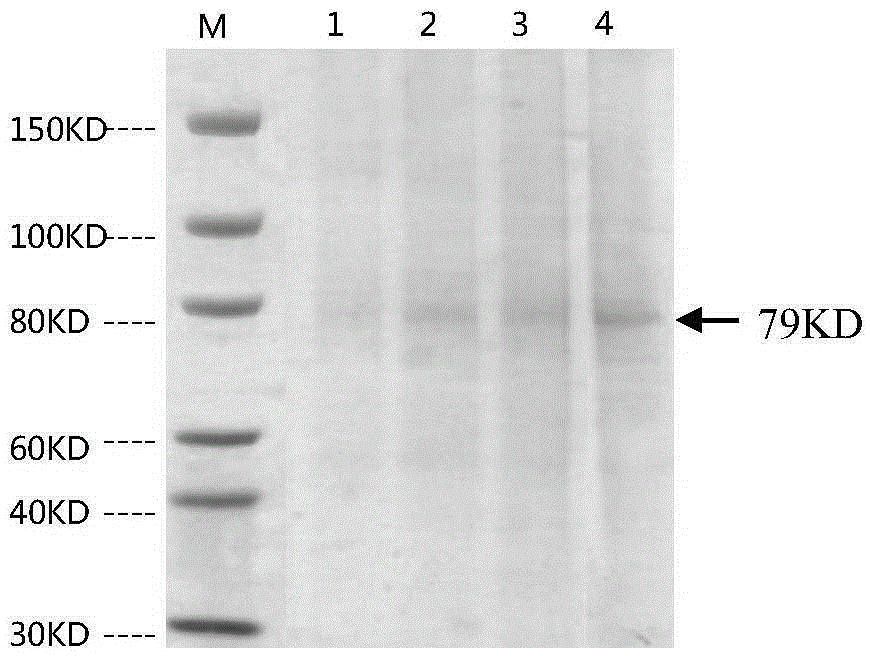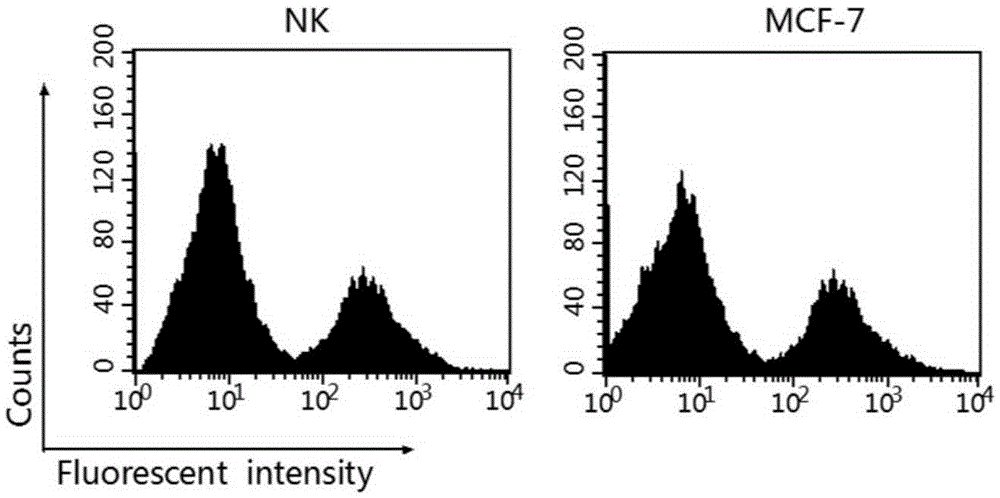Bispecific antibody resisting CD16A antigen and MUC1antigen
A bispecific antibody and specific technology, applied in the field of genetic engineering, can solve problems such as insufficient curative effect, achieve the effect of enhancing killing ability, overcoming insufficient curative effect, and overcoming small molecular weight
- Summary
- Abstract
- Description
- Claims
- Application Information
AI Technical Summary
Problems solved by technology
Method used
Image
Examples
Embodiment Construction
[0039] The preferred embodiments of the present invention will be further described in detail below in conjunction with the accompanying drawings.
[0040] 1. Preparation of bispecific antibody:
[0041] (1) Bispecific antibody construction
[0042] VL of anti-CD16A antibody and VH of anti-MUC1 pass through G 4 The S sequence is connected to form the first ScFv, the VL of the anti-MUC1 antibody and the VH of the anti-CD16A through the G 4 The S sequence is connected to form the second ScFv. The two ScFvs are connected in series through a longlinker, and at the same time, they are directly connected to the CH2 and CH3 of IgG1 after the second ScFv, and the leader peptide sequence of IgG is used as the signal peptide, such as figure 1 shown. The cDNA sequence of the artificially synthesized double antibody after codon optimization. The VL amino acid sequence of the anti-CD16A antibody is shown in SEQ ID NO: 1, the VH amino acid sequence of the anti-MUC1 antibody is shown in ...
PUM
 Login to View More
Login to View More Abstract
Description
Claims
Application Information
 Login to View More
Login to View More - R&D
- Intellectual Property
- Life Sciences
- Materials
- Tech Scout
- Unparalleled Data Quality
- Higher Quality Content
- 60% Fewer Hallucinations
Browse by: Latest US Patents, China's latest patents, Technical Efficacy Thesaurus, Application Domain, Technology Topic, Popular Technical Reports.
© 2025 PatSnap. All rights reserved.Legal|Privacy policy|Modern Slavery Act Transparency Statement|Sitemap|About US| Contact US: help@patsnap.com



